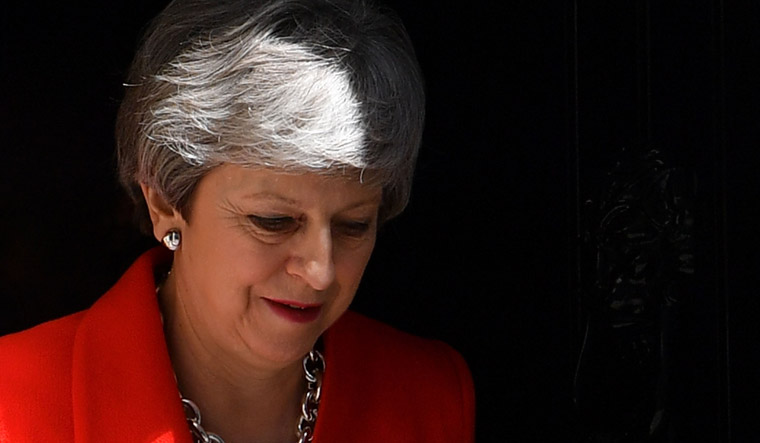British Prime Minister Theresa May on Thursday agreed to set a firm date for her resignation as Conservative Party leader to make way for a new leader in Downing Street by next month.
After a crunch meeting with the party’s influential 1922 Committee of backbench MPs, it was agreed that May would set out an exact timetable for her exit after her Brexit deal goes through the House of Commons for a fourth time in early June.
It had been announced earlier this week that May intends to bring her controversial Brexit Withdrawal Agreement, already defeated three times by British MPs, back for another vote in the week beginning June 3.
In a joint statement after the crucial meeting, Graham Brady, Chair of the 1922 Committee, said: “The prime minister is determined to secure our departure from the European Union and is devoting her efforts to securing the 2nd Reading of the Withdrawal Agreement Bill in the week commencing 3 June 2019 and the passage of that Bill and the consequence departure of the United Kingdom from the European Union by the summer.
“We have agreed that she and I will meet following the 2nd Reading of the Bill to agree a timetable for the election of a new leader of the Conservative and Unionist Party.”
The move effectively sets the clock ticking for May, who has been under pressure from within her Tory party to set a definitive date for her Downing Street departure. Brady clarified later that during the frank exchange with May, it was agreed that the exit timetable would be set regardless of what the vote is on the Bill whether it passes or whether it fails”.
May had announced earlier in the year that she would make way for a new prime minister once she had seen an exit agreement through parliament. However, her deeply divided party continued to mount pressure on her to name a specific date for her exit as the likelihood of her controversial Withdrawal Agreement clearing the Commons hurdle a fourth time remains elusive.
The biggest stumbling block, the so-called Irish backstop, continues to divide the parliamentary votes as many fear it would be used as a backdoor to keep the UK tied to EU rules even after Brexit.
PODCAST: How badly will Brexit end for the UK?
Meanwhile, Boris Johnson confirmed publicly for the first time on Thursday that he will run to replace May as leader of the Conservative Party and the new prime minister.
Speaking at a private event in Manchester, the former Cabinet minister told the gathering: “Of course, I’m going for it. I don't think that is any particular secret to anybody. But you know there is no vacancy at present.
Johnson had been widely seen as a frontrunner pro-Brexit candidate alongside Dominic Raab, the former Brexit minister who had similarly resigned from May’s Cabinet last year due to differences over the Brexit Withdrawal Agreement.
Other contenders widely speculated to throw their hat in the leadership ring include Cabinet members such as Michael Gove, Amber Rudd, Sajid Javid, Jeremy Hunt and Penny Mordaunt.



